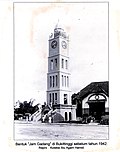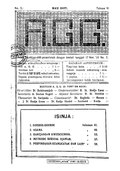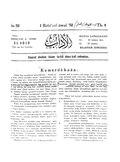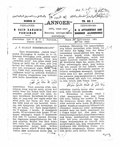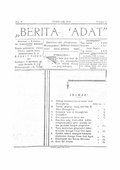Commons:Pusat Dokumentasi dan Informasi Kebudayaan Minangkabau
Pusat Dokumentasi dan Informasi Kebudayaan Minangkabau or PDIKM is a museum in West Sumatra which is situated in Padang Panjang City. The museum has various details and collections about Minangkabau cultures, in audio and visual media.
History of its establishment
One of the main reasons behind the establishment of PDIKM is the assumption that the Minangkabau community does not have good written historical evidence, because Minangkabau people are accustomed to the speech culture handed down from generation to generation; in fact, documentation about Minangkabau is more commonly found outside of Minangkabau, for example at the Indonesian National Museum, Jakarta or the Leiden Museum, in the Netherlands. Departing from the awareness to preserve and bring documents to Minangkabau culture closer to the Minangkabau people themselves, Bustanil Arifin, Former Minister of Cooperatives of the Republic of Indonesia during the New Order, took the initiative to establish a non-profit institution in the form of gathering various documents and information about Minangkabau culture. Abdul Hamid, who for most of his life's education service in West Sumatra, was asked to pay attention to explore the establishment of this institution, and then on January 8, 1988 the Minangkabau Cultural Information and Documentation Foundation was established.
Over time, at the agreement of the Minangkabau Cultural Information and Documentation Foundation with the Padang Panjang City Government, PDIKM management was transferred from YDIKM to the Padang Panjang City Government, in this case the Culture and Tourism Youth Sports Service. This is to ensure better management, both in terms of material, management, and human resources management.
The collections
- 1,900 volumes of books and magazines published before 1942;
- About 1,500 titles of books published after 1950 contributed by the community and a large stack of clippings of various newspapers and magazines;
- 90 photo albums;
- 500 photos in large and small frames;
- 142 positive microfilm reel, contents in the form of old manuscripts, newspapers published before World War II, etc.; to read the microfilm, PDIKM already has 35 positive or negative microfilm reading devices complete with other supporting tools.
- About 600 tapes containing contents from classical Minangkabau songs such as saluang, rebab and so on to Minangkabau pop songs;
- A collection of replicas of traditional Minangkabau musical instruments.
Wikimedia and PDIKM cooperation
At the time Wikimedia Indonesia invited PDIKM cooperation to digitize manuscripts from their collections, PDIKM to open hundreds of texts stored in it. This accelerates the process of signing a cooperation agreement and begins the digitization process. Like several other museums in Indonesia, PDIKM has thousands of copies of Minangkabau-themed magazines and manuscripts and local culture that can enrich content on the Internet by transferring it to digital format.
One of the collections that have been digitized from PDIKM is Aboean Goeroe-Goeroe Magazine.
The importance of the PDIKM collection in the Commons
At this time, there are not many Minangkabau manuscripts found on the Internet in a free license that makes it easy for users from Indonesia and abroad, who are interested in Minangkabau, to access these collections. Wikimedia Indonesia seeks to bring copyrighted texts that have expired to the Internet in the hope that these texts can evoke the religious and culturally eastern polarity of Minangkabau into the vast Internet. This then encouraged the young generation of Minangkabau to love and maintain their ancestral culture well so that it could be passed on to generations after them.
Explore PDIKM collections
To explore the digitized PDIKM collections, click Category:Scanned from Minangkabau Culture Documentation and Information Center.
Press
- Media coverage
- Kabar Express: Dinas Pariwisata Padang Panjang MoU dengan Wikimedia Indonesia
- Klik Positif: Wikimedia Indonesia Digitalisasi PDKIM Padang Panjang

